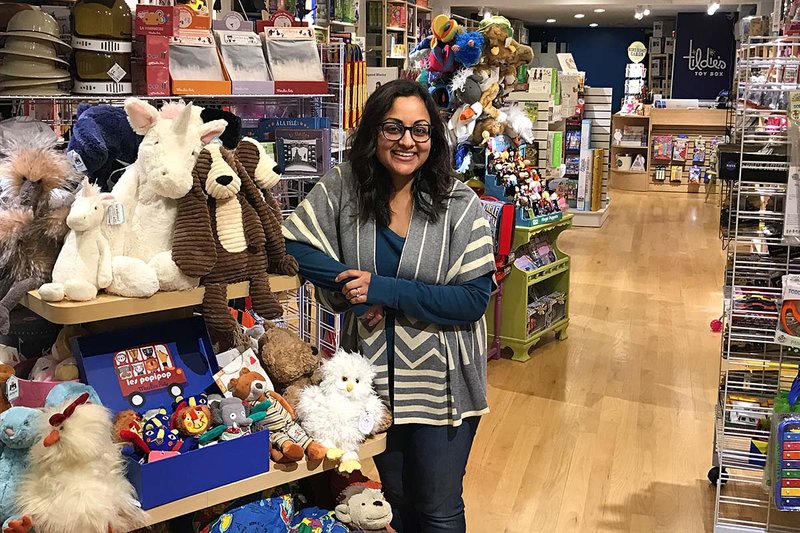By Jonathan Takiff
Philadelphia Daily News
WWR Article Summary (tl;dr) Don’t count independent toy stores out just yet! The president of the trade group representing toymakers nationwide says indie toy sellers now function as trusted “curators” for their guests, as guides delivering personalized services you can’t find in those big box retailers.
Philadelphia Daily News
Like book and record shops, the charming independent toy store has been virtually written off in this age of online and big-box emporiums.
But don’t talk endangered to Michelle and Paul Gillen-Doobrajh, the “mom-and-pop” team that opened Tildie’s Toy Box in Philadelphia last summer “to a great response from the community,” Michelle said.
And don’t murmur extinction to the powers that be at the American Specialty Toy Retailing Association, a trade group representing 800 merchants, plus 1,000 sales reps and toymakers nationwide.
ASTRA recently released its carefully vetted 2016 Best Toys for Kids Awards, “one of the few toy awards that doesn’t have entry fees, equalizing the field for small makers,” said association president Kimberly Mosley. There isn’t an Elmo or Barbie, Razer ride-on, Airhog or “collectible” anything in the bunch.
Mosley said that toy reps, agents selling for different manufacturers, “say that 75 percent of the stores they used to sell to 10 years ago are now out of business.” Yet she said she believes “we’ve hit the bottom of the market and are on the way back up.”
One reason: As with the recently rebounding record and book businesses, indie toy sellers now function as trusted “curators” for their guests, as guides delivering personalized services you can’t find elsewhere.
“More often than not, you’ll be greeted personally by the owner of the shop,” Mosley said. “They’re happy to assess your needs, ‘Tell me about your child, and I’ll show you what’s appropriate’, with a personal walk around the store and hands-on experience.”
All that is becoming especially important as shoppers crave guidance on the befuddling array of STEM and STEAM (science, technology, engineering, arts, and mathematics) specialty toys.
It’s a mixed breed that is rarely advertised on TV but is now one of the industry’s biggest growth categories, last year claiming $32.4 billion in retail value sales globally, according to a recent Toy Industry Association report.
To make it at Tildie’s Toy Box, or onto the ASTRA Best Toys list, a product has to offer “real play value that engages the children, focuses on development and enrichment,” said Michelle Gillen-Doobrajh, who came to the toy business after advanced studies in architecture at the University of Pennsylvania (where she met her IT-focused husband), then a spell as a pastry chef. But what really got her going was a stay-at-home career as mother of two young girls, now 18 months and 4 years old.
“I went looking for, but couldn’t find, the kind of toy store I grew up loving as a child,” she said. “What I found were just big-box toy stores and departments obsessed with ‘press a button and a nose lights up’ toys, with pink, princess-y things for girls and rugged toys for boys. My philosophy is toys should be gender-neutral. It’s fun and OK for everybody to get messy, dig in the dirt, play with science toys.”
What are her thoroughly modern notions of fun? Playthings like ASTRA Best Toys of 2016 winners Sew Mini Treats, a sewing crafts kit from Klutz ($21.99) for creating 18 cute food plushies, and SpinAgain ($29.95 from Fat Brain), an early-play stacking toy that magically spins each addition down a corkscrew-threaded holder.
To work those STEM cells, ASTRA’s recommendations include Snap Circuits Jr. project kits ($18-$40 by Elenco) and the Geckobot, a Thames & Kosmos put-together (about $50) for building a suction-working, wall-climbing robotic lizard.
Andrew Quartin, president of Thames & Kosmo, now a $100 million-a-year global company, said, “I don’t know what we’d do without the indie toy stores and museum shops,” which are also part of ASTRA.
“These specialty retailers don’t just comprise 10 to 20 percent of our business,” Quartin said, “they’re also our brand ambassadors and crucial to our growth in the last few years.”














































































































































































































































































































































































